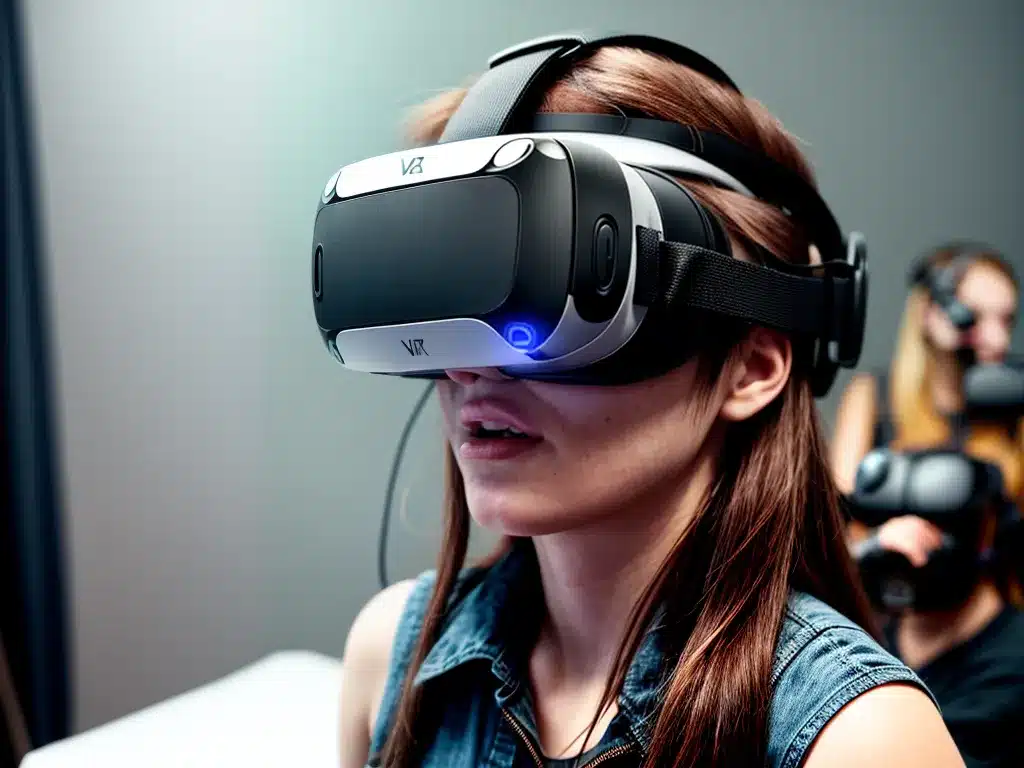
Virtual reality (VR) technology has come a long way in recent years. However, some people wonder if VR visuals will ever look as good as real life. There are a few key factors that determine how realistic VR can look.
Fidelity of Headsets
The visual fidelity provided by VR headsets is constantly improving. Early VR headsets like the Oculus Rift and HTC Vive provided a resolution of 1080 x 1200 per eye. Modern headsets like the Valve Index have pushed this to 1440 x 1600 per eye. Higher resolution means sharper image quality and reduced screen door effect.
Other aspects like field of view, refresh rate, and pixel density also affect visuals. Oculus Quest 2 has a field of view of 90 degrees and 90Hz refresh rate. More advanced headsets aim for human-like field of view of over 200 degrees and 120Hz+ refresh rates. Higher frame rates result in smoother motion.
As VR headset technology progresses, resolutions will likely reach 4K and beyond per eye. With other enhancements, this will lead to extremely realistic visuals.
Power of Graphics Hardware
Rendering high fidelity VR visuals requires powerful GPUs. VR games today are rendered at minimum 90 FPS to avoid motion sickness. Modern GPUs like Nvidia RTX 3080 can deliver 120+ FPS in many VR games.
As GPU power increases, VR visuals will become sharper and more detailed. Ray tracing support in new GPUs also enables more realistic lighting effects in VR. Foveated rendering concentrates resources on the player’s focal point. Eye tracking in upcoming headsets will enable advanced foveated rendering to boost realism.
In the future, GPUs will be able to render stunningly life-like scenes for VR headsets with high resolution and field of view. AI upscaling techniques like Nvidia DLSS will also assist in producing better visuals.
Simulating Reality
VR is ultimately trying to simulate reality. To achieve this, virtual environments need highly accurate physics, materials, lighting, animations, audio, weather effects, and more. Game engines like Unity and Unreal Engine constantly work on enhancing their simulation capabilities.
For example, ray tracing simulates how light actually bounces around a scene. Advanced materials mimic real world properties like metal, wood, water, and glass. Full body avatars with realistic animations increase immersion. Accurate 3D spatial audio adds life to virtual worlds.
As VR technology matures, real-time simulations of reality will become increasingly convincing. With enough processing power, VR could feel indistinguishable from real life.
Limits of Perception
While VR graphic capabilities are rapidly evolving, there are limits to human perception. The effective resolution of the human eye is around 576 megapixels under ideal conditions. Most people cannot distinguish individual pixels below 60 pixels per degree.
There are also limits to motion perception, depth perception, field of view, frame rates, focal range, and other aspects of vision. As long as VR visuals exceed these perceptual thresholds, additional improvements may not be noticeable.
So while VR graphics can continue improving, there are diminishing returns past a certain point. VR may not need to match real life visual fidelity to create convincing experiences.
The Future of VR Graphics
In summary, VR headsets are likely to continue improving in resolution, field of view, refresh rates, and other areas. GPUs will become more powerful thanks to Moore’s law. Game engines will enhance their real-world simulations. This steady progress will result in VR visuals that appear highly realistic and nearly indistinguishable from real life in some contexts.
However, there are limits to human perception that do not require perfect realism. So while VR graphics will continue improving, competing with real life fidelity may not be the ultimate goal. As long as VR provides a convincing and immersive experience, that will suffice for most applications. The future is bright for high fidelity VR that transforms how we interact with virtual worlds.












